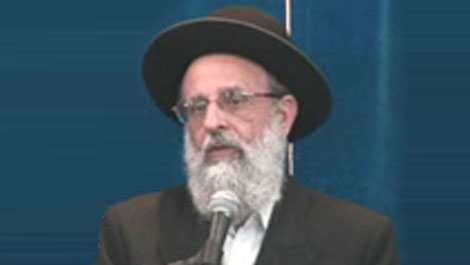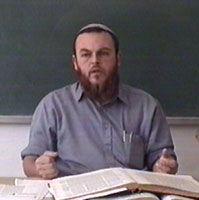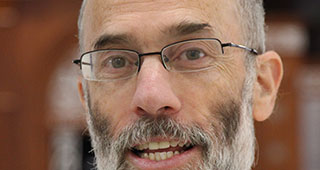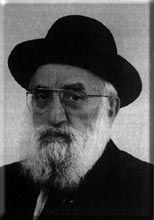Beit Midrash
- Library-Sifria
- Pninei Halacha
- Prayer
- Jewish Laws and Thoughts
- Prayer
- Kaddish
Kaddish is special in that its content deals mainly with the respect and glory of Heaven (kevod Shamayim). Therefore, one must have great kavanah in his response, be careful not to let his mind wander, and not chatter while it is being recited (Shulchan Aruch 56:1; Mishnah Berurah 1). The Chachamim say about anyone who answers "Amen, Yehei Shemei rabba…" with complete concentration, that a harsh decree of seventy years of judgment against him is torn up (Shabbat 119b; Talmidei Rabbeinu Yonah). Further, they say that when Jews enter the synagogues and recite "Yehei Shemei rabba mevorach" out loud, their harsh decrees are nullified (Pesikta, as cited there by the Tosafot). Additionally, they state that the response to Kaddish arouses Hashem to grant mercy to Israel in exile. When Jews enter synagogues and study halls (batei midrashot) and respond, "Yehei Shemei HaGadol mevorach," the memory of the exiled Jews ascends before HaKadosh Baruch Hu, Who shakes His head in pain, so to speak, and says, "Fortunate is the king who is glorified this way in his house," awakening the desire to redeem Israel before Him (see Berachot 3a).
By reciting Kaddish, Hashem is sanctified. Therefore, it must be recited in a minyan, for Hashem is only sanctified by an "eidah" (a group) of Jewish people. Kaddish was composed in Aramaic, the language in which all Jews were fluent during the Second Temple period. The following is a translation of the prayer: "Exalted and sanctified be His great Name in the world which He created according to His will. And may He rule His Kingdom, and produce His salvation and draw His messiah near, in your lifetime and in your days (those of the congregation praying), and in the lifetime of the entire House of Israel, speedily and soon, and say, Amen." The congregation responds, "Yehei Shemei rabba mevorach l’Alam ul’almei almaya," which is translated as, "May His great Name be blessed forever and ever." The chazan continues, "Blessed, praised, glorified, exalted, uplifted, honored, elevated, and lauded be the Name of the Holy One, Blessed is He, beyond all blessings, songs, praise, consolations uttered in the world, and say, Amen."
That main part of the Kaddish is also called "Half-Kaddish." Responding to it is of utmost importance, beyond compare. Even a person who is in the middle of Birkot Keriat Shema is permitted to stop to answer Amen. 7 It is a mitzvah to run to hear Kaddish. One who already finished praying and has before him two minyanim, one reciting Kaddish and the other Kedushah, it is preferable that he join the minyan reciting Kaddish, for the virtue of Kaddish is greater than that of Kedushah (Mishnah Berurah 56:6). 8
7.The Various Kinds of Kaddish
The Chachamim established the recital of Kaddish at the conclusion of each stage of the prayer service. After the recital of the Korbanot, Kaddish d’Rabbanan is recited; after the conclusion of Pesukei d’Zimrah, Half-Kaddish; after Nefillat Apayim and Tachanunim, Half-Kaddish; following Kedushah d’Sidra, Kaddish-Titkabal is recited; after Shir Shel Yom, Mourner’s Kaddish (Kaddish Yatom); and after Pitum HaKetoret, Kaddish d’Rabbanan (Shibolei HaLeket 8). With the Kaddish, we close each stage of the prayer service and elevate it towards the most supreme objective, the respect of Heaven, and from there we continue on to the next stage.
There are four versions of Kaddish:1) Half-Kaddish. This is the essence of the Kaddish. It is called Half-Kaddish so as to distinguish it from other Kaddishim which contain further additions. In any section of prayer where a prolonged interruption is undesirable, Half-Kaddish is recited. 2) Kaddish Yehei Shelama, also called Kaddish Shalem (Full-Kaddish). This is recited after saying verses of Scripture, and contains an added request for peace and good life for us and for all Israel. We conclude, "Oseh shalom bimromav… v’imru Amen". Since this Kaddish is usually recited by people who have lost a parent, it is also called Kaddish Yatom (Mourner’s Kaddish). 3) Kaddish-Titkabal. The chazan recites this Kaddish after the conclusion of the Amidah. In it, before the addition of Kaddish Shalem, a request is added that our prayers be accepted. 4) Kaddish d’Rabbanan. This Kaddish is recited after learning rabbinic teachings. Before the addition of Kaddish Shalem, we add a prayer in this Kaddish for those who learn Torah, that they should merit long and prosperous lives.
Responding Amen to these additions is not as important as responding to the main part of the Kaddish. Therefore, one may not interrupt the recital of Birkot Keriat Shema and Pesukei d’Zimrah in order to respond to them.7
8.The Order of the Kaddishim Recited at the End of the Prayer Service
Following the prayers of supplication after the Amidah, Half-Kaddish is recited. On days on which Tachanun is not said, the Half-Kaddish is recited immediately after the Amidah. The reason that only Half-Kaddish is recited is to prevent interruption between the Amidah and Kaddish-Titkabal, which is recited after Kedushah d’Sidra. As long as the chazan has not recited Kaddish-Titkabal, he has not yet completely finished the Amidah repetition. Therefore, the chazan need not take three steps back upon the conclusion of the Amidah repetition, for he separates from prayer by taking three steps back at the end of Kaddish-Titkabal. On Mondays and Thursdays, when the Torah is read, Half-Kaddish is also recited after the Torah reading. We already learned that after Kedushah d’Sidra, the chazan recites Kaddish-Titkabal.
After Shir Shel Yom, Full-Kaddish is recited, the Kaddish said after the recital of Scriptural verses. Customarily, mourners are the ones to recite this Kaddish, for its recital possesses benefit for the elevation of the deceased person’s soul (see earlier in this book 4:5-6). If no mourner is present, one who does not have a parent recites it. However, if there is no one there who has lost a parent, it is customary not to recite this Kaddish, for, since it is normally recited by mourners, it is unbecoming for one whose parents are both alive to recite it. 9
After Pitum HaKetoret, Kaddish d’Rabbanan is recited, for it was instituted to be recited after rabbinic study. This type of Kaddish is also usually recited by mourners. When there is no one present who has lost a parent, it is customary not to recite it. In principle, the correct practice is that the chazan recites it, because it is not called Mourner’s Kaddish. However, since orphans have become accustomed to reciting it, many treat it like Mourner’s Kaddish.
The Chachamim greatly praise the virtue of this Kaddish, and teach that after the destruction of the Temple, it is one of the things in whose merit the world stands (Sotah 49a). The reason for this is because it is recited after a group of people (at least ten) learn Torah, and hence, its recital combines the mitzvah of Torah study, equivalent to all the mitzvot, and the sanctification of Hashem’s Name (Rashi).
^ 7.According to the opinion of the Mishnah Berurah 66:17, one who is in the middle of Birkot Keriat Shema or Pesukei d’Zimrah responds to the Kaddish in two places: "Amen, yehei Shemei rabba mevorach l’alam ul’almei almaya," and also "Amen" at the end. According to the Kaf HaChaim 66:23, he responds with all five Amens in the main part of the Kaddish. See the laws of Birkot Keriat Shema in this book, 16:5.
It is important to state that according to Minhag Sephard, the chazan says "v’yitzmach purkanei vikarev meshichei" in the wording of the Kaddish and the congregation responds Amen, whereas in Minhag Ashkenaz, those four words are not recited. The root of this difference lies in the teachings of the Geonim. In Siddur Rav Amram Gaon and Machzor Vitri, the Kaddish is written like Minhag Ashkenaz, and in Siddur Rav Sa’adyah Gaon and in the Rambam it is like Minhag Sephard, although only "v’yitzmach purkanei" is mentioned (see Netiv Binah, part 1, p. 366). Further, it should be noted that in the main part of the Kaddish this is the only distinction; however, at the end of the Kaddish, there are many differences, for in the main part of the prayer the original nusach that Chazal instituted was better preserved. But, in the additions made by the sages of the generations after the scattering of the exiles, the discrepancies between the wordings are more pronounced.
^ 8.It is written in the Zohar, part 2, 129:2, that the virtue of the Kaddish is greater than the other Kedushot for it has in it the power to break all the barriers of evil and sanctify Hashem in all the worlds. Therefore, it is recited in Aramaic, in order to strike the external forces in their own external tongue.
^ 9.Even though the Rama 132:2 writes that someone whose parents do not object may indeed recite this Kaddish, in actuality, this was not the custom, for fear of a bad omen (see Piskei Teshuvot 132:17; Az Nidberu 13:33). Nonetheless, when there is a great need, such as when the father is unable to recite Kaddish and it is necessary for a different family member to say Kaddish for the grandfather, and both parents agree, then the grandson would be permitted to recite Kaddish for his grandfather.
























